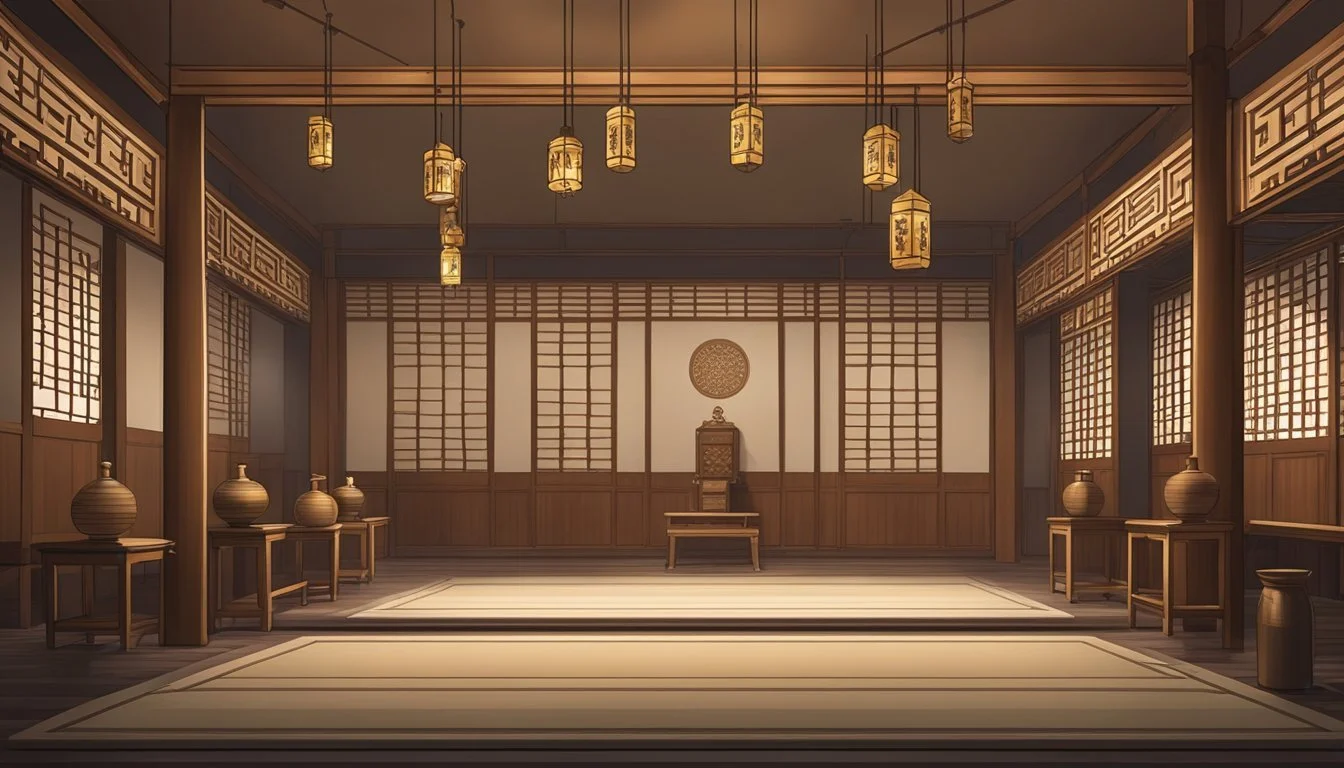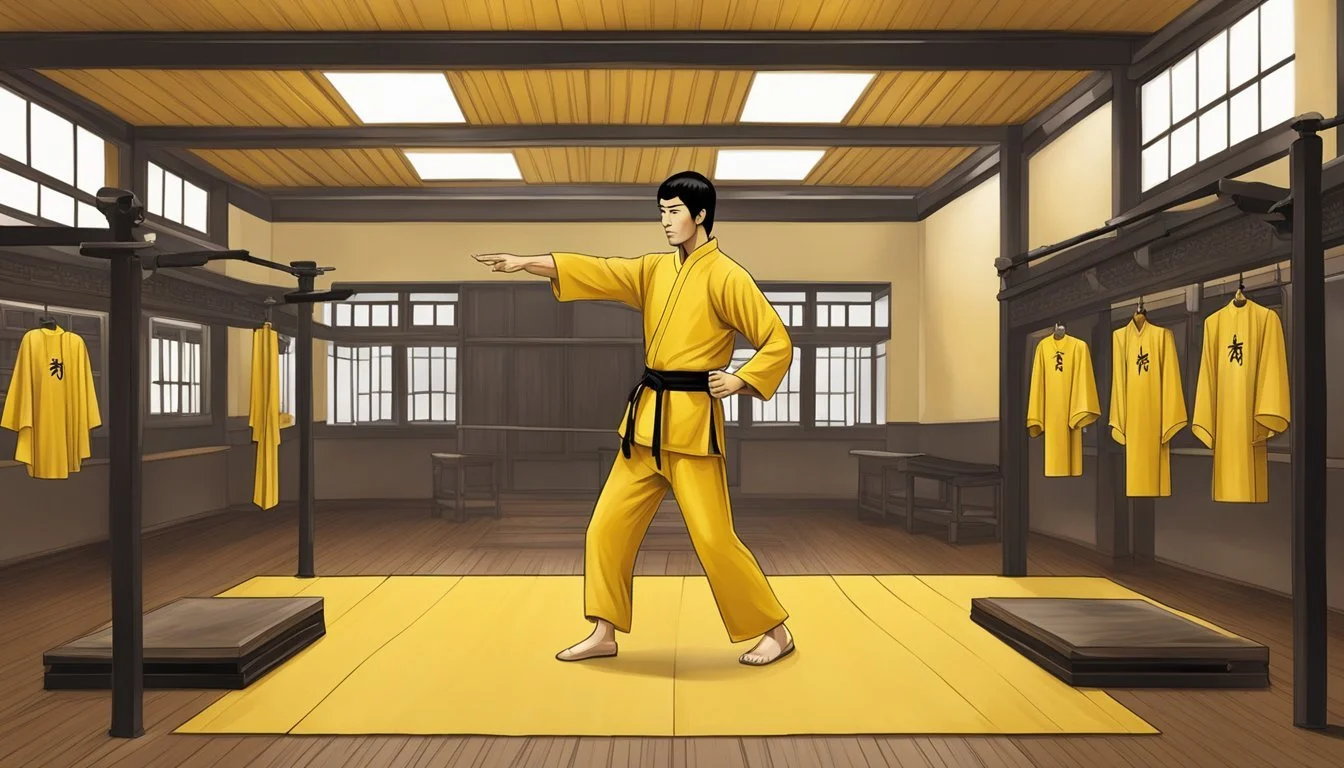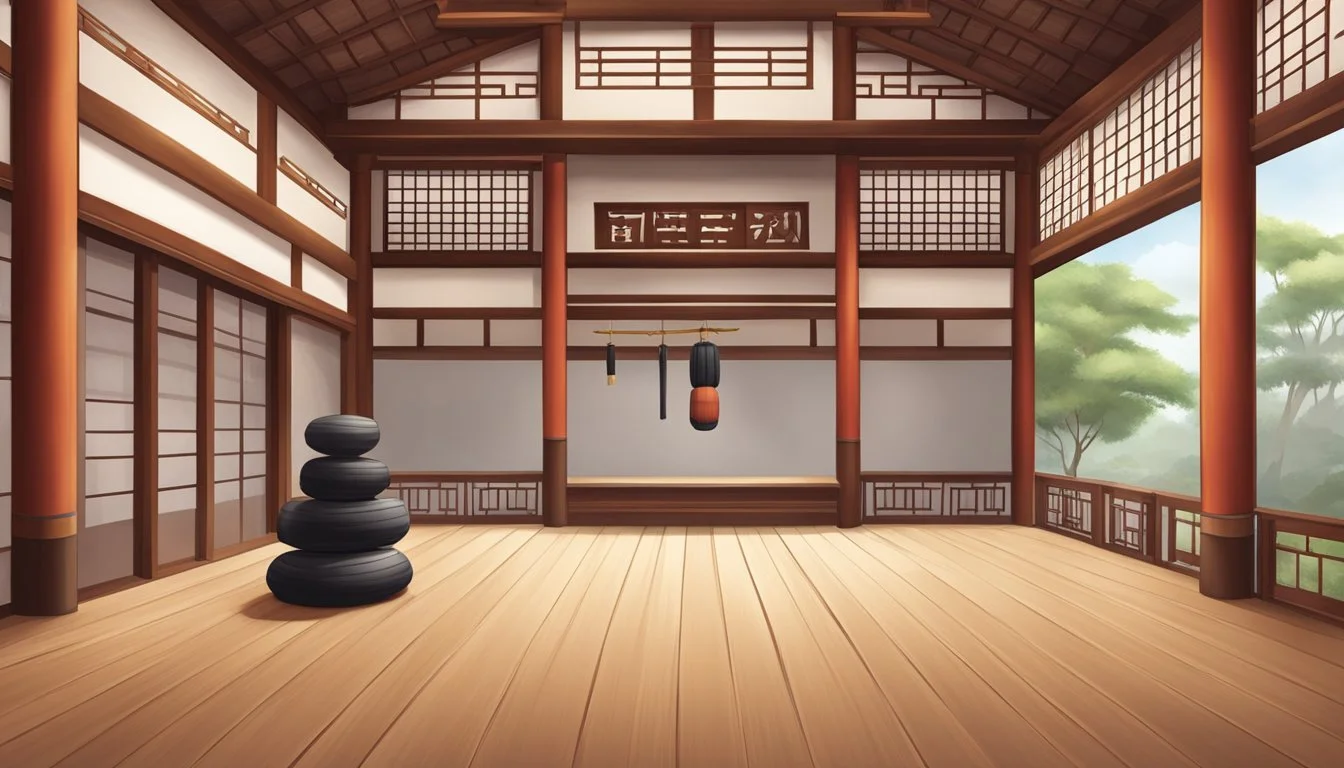The Genuine Ip Man: Bruce Lee's Master in Reality
Unraveling the True Story
Ip Man, also known as Yip Man, was a renowned Wing Chun master who played a pivotal role in shaping martial arts history. His legacy extends far beyond his own accomplishments, as he became the teacher of one of the most iconic martial artists of all time: Bruce Lee. While Ip Man is often credited as Bruce Lee's primary kung fu instructor, the reality of their relationship and Lee's martial arts journey is more complex.
Born in 1893 in Foshan, China, Ip Man's life spanned tumultuous times. He lived through major historical events, including the Japanese occupation of China and the subsequent civil war. These experiences shaped his character and influenced his approach to martial arts. Ip Man's expertise in Wing Chun attracted many students, including a young Bruce Lee in the 1950s.
Bruce Lee trained under Ip Man for several years, learning the foundational principles of Wing Chun. This training provided Lee with a solid base for his martial arts skills. However, Lee's martial arts education extended beyond his time with Ip Man. He continued to study various styles and develop his own unique approach to combat, which ultimately led to the creation of his philosophy of Jeet Kune Do.
The Life of Ip Man
Ip Man's life was marked by both triumph and adversity. He rose from humble beginnings to become a renowned martial arts master, leaving an indelible mark on the world of Wing Chun.
Early Years and Education
Born in 1893 in Foshan, Guangdong, China, Ip Man came from a wealthy family. He received a traditional Chinese education, focusing on literature and philosophy. At age 12, Ip began learning Wing Chun under Chan Wah-shun.
After Chan's death, Ip continued his training with Chan's senior students. He later moved to Hong Kong for secondary education at St. Stephen's College. There, Ip further honed his Wing Chun skills under Leung Bik, son of the legendary Leung Jan.
Wing Chun Training and Development
Ip Man dedicated his life to mastering and refining Wing Chun. He returned to Foshan in 1917 and became known for his martial arts prowess. Ip taught a select group of students and worked as a police officer.
During the Second Sino-Japanese War, Ip refused to teach Japanese soldiers. This decision forced him to flee to Hong Kong in 1949. There, he opened a Wing Chun school, attracting numerous students, including the young Bruce Lee.
Ip's teaching style emphasized practical application and efficiency. He adapted Wing Chun techniques to suit modern combat situations.
Family and Personal Life
Ip Man married Cheung Wing-sing in 1917. They had four children together. Despite his martial arts success, Ip faced financial struggles, especially after moving to Hong Kong.
He developed an opium habit to cope with the challenges of refugee life. This addiction affected his health and family relationships. Despite these difficulties, Ip remained committed to teaching Wing Chun until his death in 1972.
Ip's dedication to his art and his students left a lasting legacy. His life story has inspired numerous films and documentaries, cementing his place in martial arts history.
Bruce Lee and Ip Man's Relationship
The connection between Bruce Lee and Ip Man profoundly shaped martial arts history. Their student-teacher bond went beyond mere technique, encompassing philosophy and personal growth.
First Encounter and Impressions
Bruce Lee met Ip Man in 1954 at age 13. Lee sought training after losing a street fight, determined to improve his skills. Ip Man, impressed by Lee's enthusiasm, accepted him as a student despite initial hesitation due to Lee's mixed heritage.
Ip Man recognized Lee's exceptional talent and dedication early on. He saw potential in the young Lee's quick reflexes and intense focus during training sessions. This positive first impression laid the foundation for their enduring relationship.
Training Sessions and Philosophies
Ip Man's Wing Chun classes were rigorous, emphasizing practical application over flashy techniques. Lee trained diligently, often staying after class for extra practice. Ip Man taught the importance of economy of motion and adaptability in combat.
Key Wing Chun principles Lee learned:
Centerline theory
Trapping and simultaneous attack-defense
Chi sao (sticky hands) drills
Ip Man encouraged Lee to question traditional methods and develop his own style. This philosophy of constant refinement greatly influenced Lee's later martial arts approach.
Influence on Bruce Lee's Martial Arts
Ip Man's teachings formed the core of Lee's martial arts foundation. Wing Chun's directness and efficiency became central to Lee's Jeet Kune Do philosophy. Lee incorporated many Wing Chun concepts, adapting them to create a more fluid, adaptable fighting system.
Ip Man's emphasis on practicality over tradition resonated with Lee. This mindset inspired Lee to explore other martial arts styles, integrating useful elements into his own practice. The concept of "using no way as way" in Jeet Kune Do echoes Ip Man's teachings on adaptability.
Lee's famous one-inch punch technique evolved from Wing Chun's close-range striking principles. The influence of Ip Man's teaching is evident in Lee's lightning-fast reflexes and economy of motion, hallmarks of his fighting style.
Historical Context of Wing Chun
Wing Chun emerged as a distinctive martial art in southern China, evolving over centuries before becoming globally recognized. Its development was shaped by cultural, political, and social factors of the time.
Origins and Evolution
Wing Chun's roots trace back to the Southern Shaolin Temple in Fujian province. Legend attributes its creation to Ng Mui, a Buddhist nun who developed the style after observing a crane and snake fighting. The art was then passed down through generations, primarily within the Cantonese opera community.
Wing Chun emphasized efficiency and practicality, focusing on close-range combat techniques. Its principles included centerline theory, economy of motion, and simultaneous attack and defense. The style gained popularity among Chinese immigrants in Hong Kong during the early 20th century.
Wing Chun in the Era of Ip Man
Ip Man, born in 1893, played a crucial role in popularizing Wing Chun. He learned the art from Chan Wah-shun and Leung Bik in Foshan. After moving to Hong Kong in 1949, Ip Man began teaching Wing Chun publicly.
His approach to instruction was systematic and practical. Ip Man refined the art, emphasizing its scientific principles and adapting it for modern practitioners. His teaching methods attracted numerous students, including Bruce Lee.
Under Ip Man's guidance, Wing Chun transitioned from a relatively obscure style to a globally recognized martial art. His efforts laid the foundation for Wing Chun's international spread and continued evolution.
Ip Man's Martial Arts Philosophy
Ip Man's approach to Wing Chun emphasized efficiency, practicality, and adaptability. He believed in developing a strong mind-body connection and honing techniques through dedicated practice.
Principles of Wing Chun
Ip Man taught that Wing Chun should be direct and economical. He stressed the importance of centerline theory, which focuses on protecting and attacking along the body's midline. Ip emphasized relaxation and sensitivity over brute strength.
His students learned to intercept attacks and respond with simultaneous defense and offense. Ip promoted the concept of "sticking hands" to develop touch sensitivity and quick reflexes.
He taught that proper structure and body mechanics were crucial for generating power efficiently. Ip encouraged students to remain flexible and fluid in their movements.
Innovation and Adaptation
While respecting Wing Chun's traditions, Ip Man was not afraid to innovate. He simplified some aspects of the art to make it more accessible and practical for modern students.
Ip adapted training methods to suit different body types and skill levels. He emphasized real-world self-defense applications over flashy techniques.
As his teaching evolved, Ip incorporated elements from other martial arts he encountered. This openness to new ideas helped keep Wing Chun relevant and effective.
Ip encouraged his students, including Bruce Lee, to question and test techniques rather than blindly accepting them. This philosophy of constant refinement became a hallmark of his teaching style.
Cultural Impact and Legacy
Ip Man's influence extends far beyond his role as Bruce Lee's teacher. His life and teachings have shaped martial arts culture and popular media representations of Wing Chun.
Ip Man's Influence in Martial Arts
Ip Man revolutionized Wing Chun, making it accessible to a wider audience. He simplified traditional techniques, emphasizing practicality and efficiency. This approach attracted students from diverse backgrounds, including Bruce Lee.
Ip Man's teaching methods focused on individual development rather than strict adherence to forms. This philosophy encouraged innovation and adaptation, traits that became hallmarks of Bruce Lee's martial arts journey.
Wing Chun schools worldwide trace their lineage to Ip Man, cementing his status as a pivotal figure in martial arts history. His emphasis on close-range combat and economy of motion continues to influence modern self-defense systems.
Popular Media and Public Perception
Ip Man's life has inspired numerous films, TV series, and books. The "Ip Man" movie franchise, starring Donnie Yen, introduced his story to global audiences.
These portrayals often blend fact with fiction, creating a romanticized image of Ip Man as a nationalist hero and unbeatable fighter. While embellished, they have sparked public interest in Wing Chun and Chinese martial arts culture.
Ip Man's connection to Bruce Lee has further elevated his status in popular culture. Many view him as the sage mentor who laid the foundation for Lee's groundbreaking martial arts philosophy.
Books and documentaries have attempted to separate myth from reality, exploring Ip Man's actual life and contributions. This ongoing interest ensures his legacy continues to evolve and inspire new generations of martial artists.
Major Disciples and Successors of Ip Man
Ip Man's legacy lives on through his numerous students who went on to become influential martial artists in their own right. His teachings shaped a generation of Wing Chun practitioners and helped spread the art globally.
Noteworthy Students
Bruce Lee stands out as Ip Man's most famous student. Lee trained under Ip Man from 1954 to 1957 before moving to the United States. He incorporated Wing Chun principles into his own martial art, Jeet Kune Do.
Wong Shun Leung, known as the "King of Talking Hands," was another prominent student. He became a respected teacher and helped popularize Wing Chun through his own students.
Leung Ting studied with Ip Man in his later years and went on to establish the International Wing Tsun Association. He played a key role in spreading Wing Chun internationally.
Prominent Figures in Contemporary Wing Chun
William Cheung, who trained under Ip Man as a teenager, became a well-known Wing Chun master. He founded the World Wing Chun Kung Fu Association and has taught worldwide.
Ip Chun, Ip Man's eldest son, continues to teach and promote Wing Chun. He has appeared in documentaries and served as a consultant for films about his father.
Samuel Kwok studied under both Ip Chun and Ip Ching. He has established Wing Chun schools in multiple countries and authored several books on the art.
These practitioners have played crucial roles in preserving and expanding Ip Man's Wing Chun legacy, ensuring its continued relevance in modern martial arts.
Distinguishing Fact from Fiction
The Ip Man films blend historical elements with artistic liberties. Separating truth from dramatization requires examining reliable sources and understanding common misconceptions.
Misconceptions About Ip Man
Many believe Ip Man single-handedly defended Chinese honor against foreign oppressors. This portrayal oversimplifies his life and exaggerates his influence. In reality, Ip Man was one of many skilled martial artists in Foshan.
The movies depict him as undefeated, but historical records show no evidence of this claim. Ip Man faced personal and professional challenges throughout his life, including poverty and opium addiction.
His relationship with Bruce Lee is often romanticized. While Ip Man did teach Lee, their interaction was limited to a few years before Lee left for the United States.
Authenticating Historical Records
Verifying Ip Man's life requires cross-referencing multiple sources. Official documents, personal accounts, and academic research provide a more accurate picture than films alone.
Ip Man's birth in 1893 and his wealthy family background are well-documented facts. His training in Wing Chun under Chan Wah-shun and Ng Chung-sok is also historically accurate.
However, specific details of his fights and achievements often lack concrete evidence. Researchers rely on family testimonies, student accounts, and local records to piece together his life story.
Photographs and written materials from the period help confirm certain aspects of Ip Man's life, such as his residence in Hong Kong and his role in popularizing Wing Chun.
Conclusion
Ip Man's legacy as Bruce Lee's teacher solidified his place in martial arts history. His mastery of Wing Chun and innovative teaching methods shaped Lee's development as a martial artist.
The relationship between Ip Man and Bruce Lee transcended that of a typical teacher-student dynamic. Ip Man recognized Lee's exceptional talent and potential early on.
Their connection had a profound impact on the global spread of martial arts. Lee's international stardom brought widespread attention to Wing Chun and Chinese martial arts as a whole.
Ip Man's life story reflects the tumultuous periods of 20th century Chinese history. He navigated challenging times while preserving and promoting traditional martial arts.
The enduring influence of Ip Man continues today. His teachings live on through generations of students and the worldwide popularity of Wing Chun.
Ip Man's role in shaping Bruce Lee's martial arts journey cements his status as a pivotal figure in kung fu history. His contributions extend far beyond a single famous student, impacting martial arts culture on a global scale.






